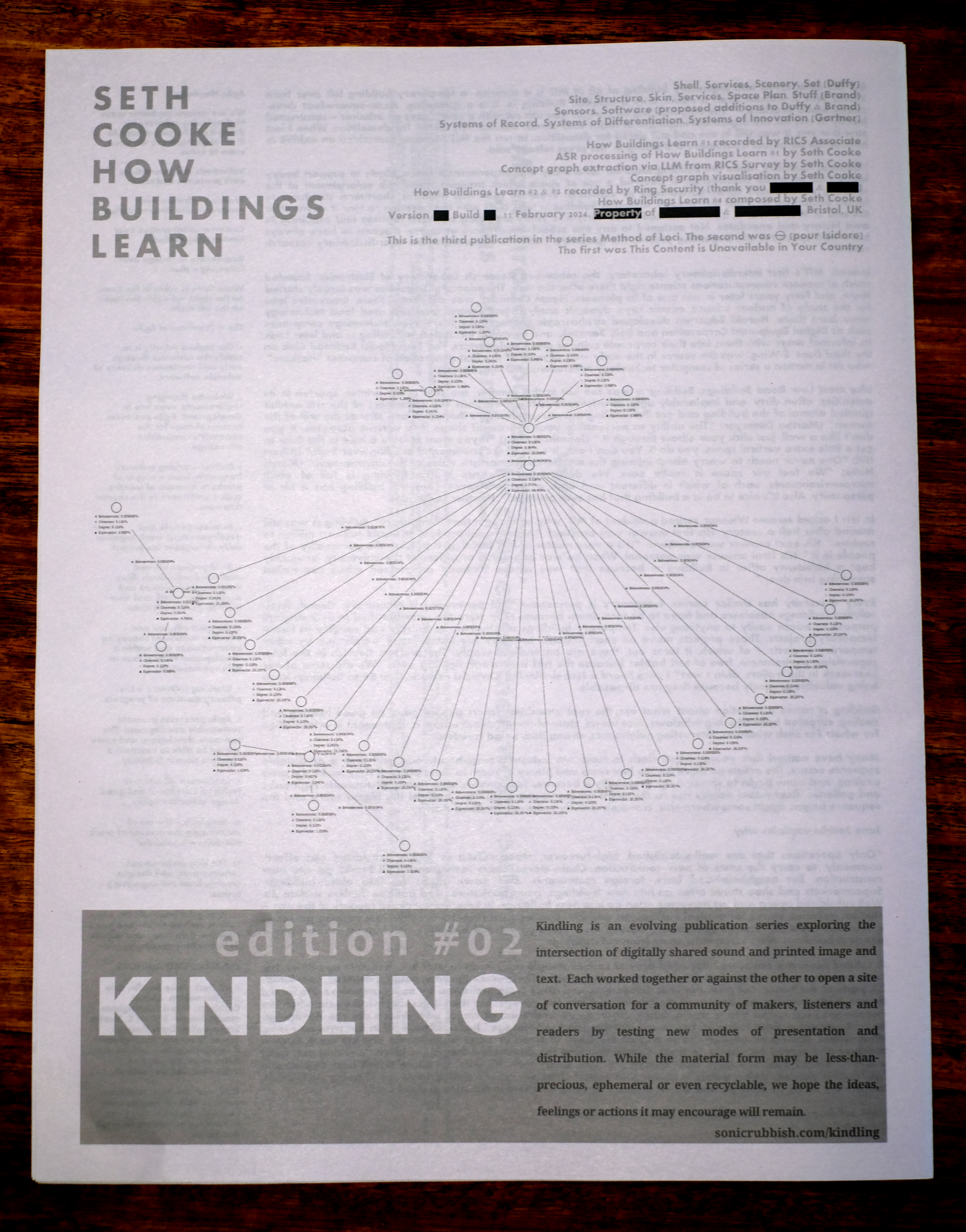KINDLING #2
How Buildings Learn - Seth Cooke
12 page printed newspaper (289x380mm) with digital audio.SONIC RUBBISH is currently away until March 1st 2026. Postage will not be available until then. My apologies for any inconvenience. eamon.
Single edition : $15 + postage
Please note that newspaper will be folded for postage
KINDLING bundle - editions #2+#3+#4 : $42 + postage
also available at the Sonic Rubbish Bandcamp page
Last year, a consultant from the Royal Institute of Chartered Surveyors took stock of my home in Bristol. He told me the survey would be sent as a pdf via email; I asked him for the audio recording of his spoken notes. The visiting field recordist graciously gifted it to me.
Around the same time, we had a security camera fitted. My daughters commented that the audio sounded like “Daddy’s music.” I can now travel anywhere in the world while producing field recordings of my home.
‘How Buildings Learn’ is the third publication in the series ‘Method of Loci’. The first – ‘This Content is Unavailable in Your Country’ – follows trails through Pornhub via videos tagged or titled “Bristol”. The second – ‘⦵ (pour Isidore)’ – transforms Plimsoll Swing Bridge into a tribute to the founder of Lettrism.
The pieces comprising ‘Method of Loci’ are about the transcription of space. Each uses an analytical process to identify a readymade, or a readymade to identify an analytical process. The point defines the perimeter. The perimeter defines the point. Then I argue with myself about how much of the working can be exposed without merely exposing an artwork that doesn’t work.
Field recording is often about access to territory, technique and technology. Change the territory, change the technique, change the technology, and you find yourself transcribing spaces to which you wouldn’t otherwise have access.
Although not in this case. I never left the house.
Seth Cooke, April 2024
---
One star review of ‘House of Leaves’ by Mark Z. Danielewski, posted 7 months ago by J dR:
Read Michael Ende’s ‘Never Ending Story’ instead, nearly all the good and fun ideas in ‘House of Leaves’ can be found there: a story that generates stories that generate stories, a house changing dimensions, even up to the disembodied scream that travels between universes.
If you like reading experimental literature just for the sake of the experiment, then go for it, but be prepared; some pages are just filled with names of photographers and at other times you have to turn the book upside down and sideways because the author thought it original to write about labyrinths in this fashion.
You should also be very cautious about any piece of non-fictional info or quote given in this book, examples are; Baudelaire’s poem ‘Le Tasse en prison’ starts with “La poëte”; attributing “Database and narrative are natural enemies…” to Manovich (it was Paglen); and a hopelessly befuddled list of sonar-equipped animals gives us dolphins as different from cetaceans. Maybe it’s an example of the author’s sense of humour, but I find that misquoting a fellow author is rather disrespectful.
It’s a pity because there are some well written parts and likeable characters, but the need to be original for the sake of originality ruins what could have been a very enjoyable psychological thriller.
8 people found this helpful
---
Rejected workshop pitch for the CRiSAP In the Field 2 symposium, 2024:
While the cartographic map accelerates the colonisation of space, the network map accelerates the colonisation of knowledge. Yet its roots still lie in spatial geometry. From the Seven Bridges of Königsberg to Google Maps, graph theory has scaled to become the primary engine powering the capitalist exploitation of other disciplines. The graph data structure – combined with technologies of machine audition, machine vision, and sensor fusion – underpins the Internet, social media, navigation, finance, communications, situational awareness, surveillance, investigation, safeguarding, large language models, and the social engineering of whole populations. The colonisation of knowledge by data science partitions our minds and our communities into privately owned public space. A single field is seeking to dominate all fields.
In this workshop I will demonstrate how an artist can identify readymades by leveraging graph theory, free or commonly used software, and public data. In doing so, we will encode into the readymade the political, economic, social, technological, environmental and legal properties of the data and the analysis – and expose how the production of knowledge mirrors the production of space. The workshop will conclude by using the process to identify and play back a location-based sound work.
It is my hope that the workshop will be a valuable antidote to the pessimism of the current moment, in which aggressive structures of ownership are burning the platforms on which artists and musicians have come to rely. While a single workshop cannot solve these problems, I aim to signpost a handful of paths forward.




